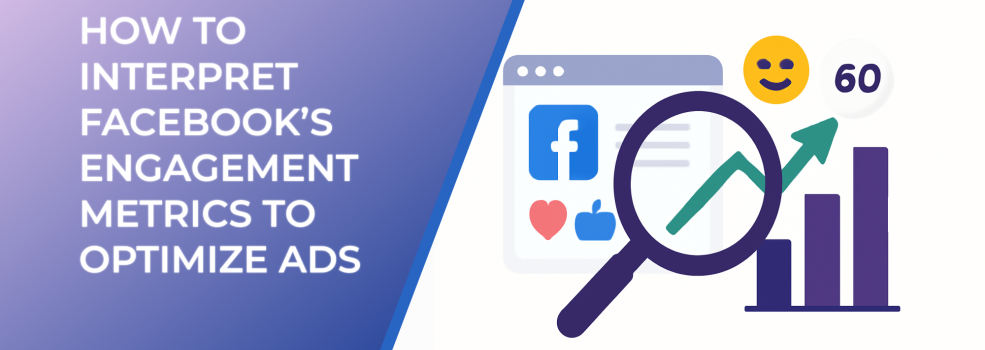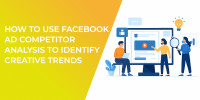Facebook Ads are a powerful tool for businesses looking to reach new audiences, drive traffic, and increase conversions. But, simply running ads isn’t enough – you need to understand how your ads are performing. Interpreting engagement metrics is crucial for optimizing your Facebook ads campaigns and maximizing your return on investment (ROI).
In this article, we’ll explore how to interpret Facebook’s engagement metrics, how they can help you improve your ads, and what key statistics you should focus on.
Why Engagement Metrics Matter
Engagement metrics provide insights into how users are interacting with your Facebook ads. By understanding these metrics, you can make data-driven decisions to improve your ad performance, ensuring your marketing budget is well spent. Without analyzing these metrics, you’re running blind, and your ad campaigns may not be achieving the results you desire.
Facebook Ads offers a range of engagement metrics that are essential for fine-tuning your campaigns. These include:
Industry averages for CTR and CPC in Facebook Ads campaigns to help assess performance.
-
Click-Through Rate (CTR): The percentage of users who clicked on your ad after seeing it. A higher CTR generally indicates that your ad is compelling and relevant to the audience.
-
Cost Per Click (CPC): The amount you pay for each click on your ad. This metric is useful for understanding the cost-effectiveness of your campaign.
-
Conversion Rate: The percentage of people who took the desired action (e.g., making a purchase, signing up) after clicking your ad. A higher conversion rate indicates a well-targeted ad.
-
Engagement Rate: This metric measures the interactions your ad receives, such as likes, shares, and comments. High engagement rates often signal that your audience finds your content interesting.
-
Reach and Impressions: Reach is the total number of unique users who saw your ad, while impressions measure the total number of times your ad was shown. Understanding these metrics can help you assess your ad’s visibility.
Key Facebook Engagement Metrics to Focus On
To optimize your Facebook ads, it’s essential to know which metrics to prioritize. While all metrics are important, some may be more relevant depending on the goal of your campaign.
A quick guide to understanding key Facebook Ads engagement metrics.
-
CTR (Click-Through Rate):
-
A high CTR generally means your ad is compelling. It reflects how relevant and engaging your ad is to your audience. If your CTR is low, you might need to improve your ad copy, visuals, or targeting.
Statistic: On average, the CTR for Facebook Ads across all industries is around 0.9%. If your CTR is higher than this, you’re on the right track.
-
-
Conversion Rate:
-
This is the most important metric if your goal is to generate sales or leads. A high conversion rate shows that your ad is driving the desired action. If this rate is low, it may indicate issues with your landing page, product, or audience targeting.
Statistic: Campaigns optimized for conversions see up to a 2x higher ROI compared to those focused only on impressions or clicks.
-
-
Cost Per Click (CPC):
-
CPC helps you understand how much you're paying for each interaction with your ad. If your CPC is high, consider testing different targeting options, ad creatives, or adjusting your bid strategy to lower your costs.
Statistic: The average CPC for Facebook Ads varies by industry, but on average, it is $1.72 in 2023.
-
-
Engagement Rate:
-
High engagement means your audience resonates with your message. If your engagement rate is low, it’s time to revisit your ad’s visuals, copy, and overall message to ensure it’s appealing to your target audience.
-
-
Frequency:
-
Frequency measures how many times the average user sees your ad. A high frequency can lead to ad fatigue, where users start ignoring your ads. If frequency is too high, it may be time to refresh your creative or broaden your targeting.
Statistic: If the frequency of your ad exceeds 3-4 times per user, you may start to experience diminishing returns in terms of engagement and conversions.
-
How to Use These Metrics to Optimize Your Ads
-
Refining Your Target Audience: If your CTR is low or your engagement rate is poor, consider refining your targeting options. Facebook’s detailed targeting options allow you to segment users based on interests, behaviors, demographics, and even location.
-
Testing Different Ad Formats: If your conversion rate is lower than expected, experiment with different ad formats (carousel, video, lead ads) to see which resonates best with your audience.
-
A/B Testing: A/B testing your ad copy, creatives, and call-to-action (CTA) buttons can help you discover what works best for your target audience. This allows you to optimize your ads for higher engagement and conversions.
-
Improving Ad Quality: If your ad’s CPC is high, it could mean that your ad quality isn’t up to par. Facebook rewards high-quality ads with lower costs. Ensure that your ad is visually appealing, has a clear message, and is relevant to the audience.
-
Optimize Landing Pages: If your CTR is high, but your conversion rate is low, the issue may not lie with the ad itself but with the landing page. Make sure your landing pages are optimized for speed, mobile-friendly, and have a clear CTA.
Conclusion
Interpreting Facebook’s engagement metrics is essential for any marketer looking to optimize their ad campaigns. By focusing on key metrics like CTR, CPC, conversion rate, and engagement rate, you can identify areas of improvement and make data-driven decisions to enhance your campaigns’ performance.

